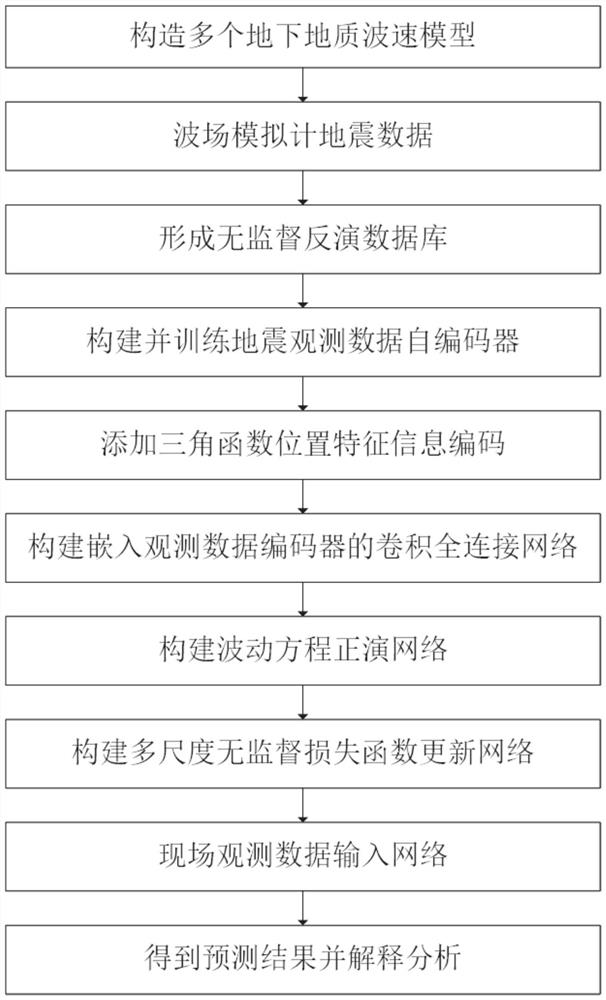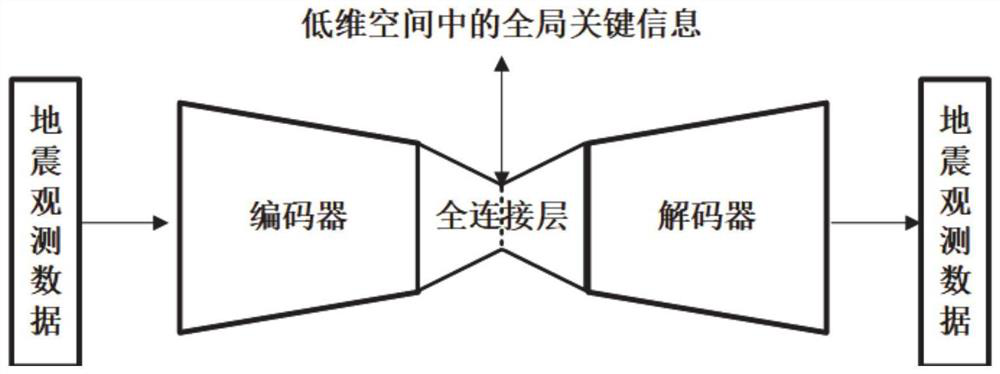Multi-scale unsupervised seismic wave velocity inversion method based on observation data self-coding
An observational data, unsupervised technology, applied in the field of geophysical exploration, can solve problems such as the difficulty of applying deep learning seismic inversion methods, and achieve the effect of improving performance and reducing the degree of nonlinearity and difficulty
- Summary
- Abstract
- Description
- Claims
- Application Information
AI Technical Summary
Problems solved by technology
Method used
Image
Examples
Embodiment 1
[0078] Specifically, the method provided in this embodiment, such as figure 1 shown, including the following steps:
[0079] Step S1, obtain the geological wave velocity model by intercepting two-dimensional slices from the three-dimensional SEG / EAGE nappe model released by the International Society of Exploration Geophysicists SEG / European Association of Geoscientists and Engineers EAGE, and obtain the corresponding seismic observation data database through computer numerical simulation ;
[0080] The size of the nappe body model intercepted in this embodiment is 1600m×5000m, and the horizontal and vertical grid sizes are both 25m. A sponge-absorbing boundary of 50 meshes is set around the model. The seismic wave velocity models all contain a water layer with a depth of 9 grids, and the seismic wave velocity is 1800m / s. The geological structure under the water layer mainly includes folds, faults, etc. The wave velocity is set according to the original SEG / EAGE nappe model,...
Embodiment 2
[0113] A multi-scale unsupervised seismic wave velocity inversion system based on self-encoding of observation data, characterized by: including:
[0114] The inversion database construction module is configured to construct and calculate corresponding seismic observation data according to actual geological conditions, and form an unsupervised seismic wave velocity inversion database based on each seismic observation data and geological wave velocity model;
[0115] The earthquake observation data self-encoding module is configured to use the simulated earthquake observation data to train multiple self-encoders, and different self-encoders encode the global key information in the earthquake observation data into low-dimensional vectors of different lengths;
[0116] The building block of the predicted wave velocity model is configured to add a position feature information code to each seismic channel of the actual observation data, which is used to determine the position inform...
PUM
 Login to View More
Login to View More Abstract
Description
Claims
Application Information
 Login to View More
Login to View More - R&D
- Intellectual Property
- Life Sciences
- Materials
- Tech Scout
- Unparalleled Data Quality
- Higher Quality Content
- 60% Fewer Hallucinations
Browse by: Latest US Patents, China's latest patents, Technical Efficacy Thesaurus, Application Domain, Technology Topic, Popular Technical Reports.
© 2025 PatSnap. All rights reserved.Legal|Privacy policy|Modern Slavery Act Transparency Statement|Sitemap|About US| Contact US: help@patsnap.com



